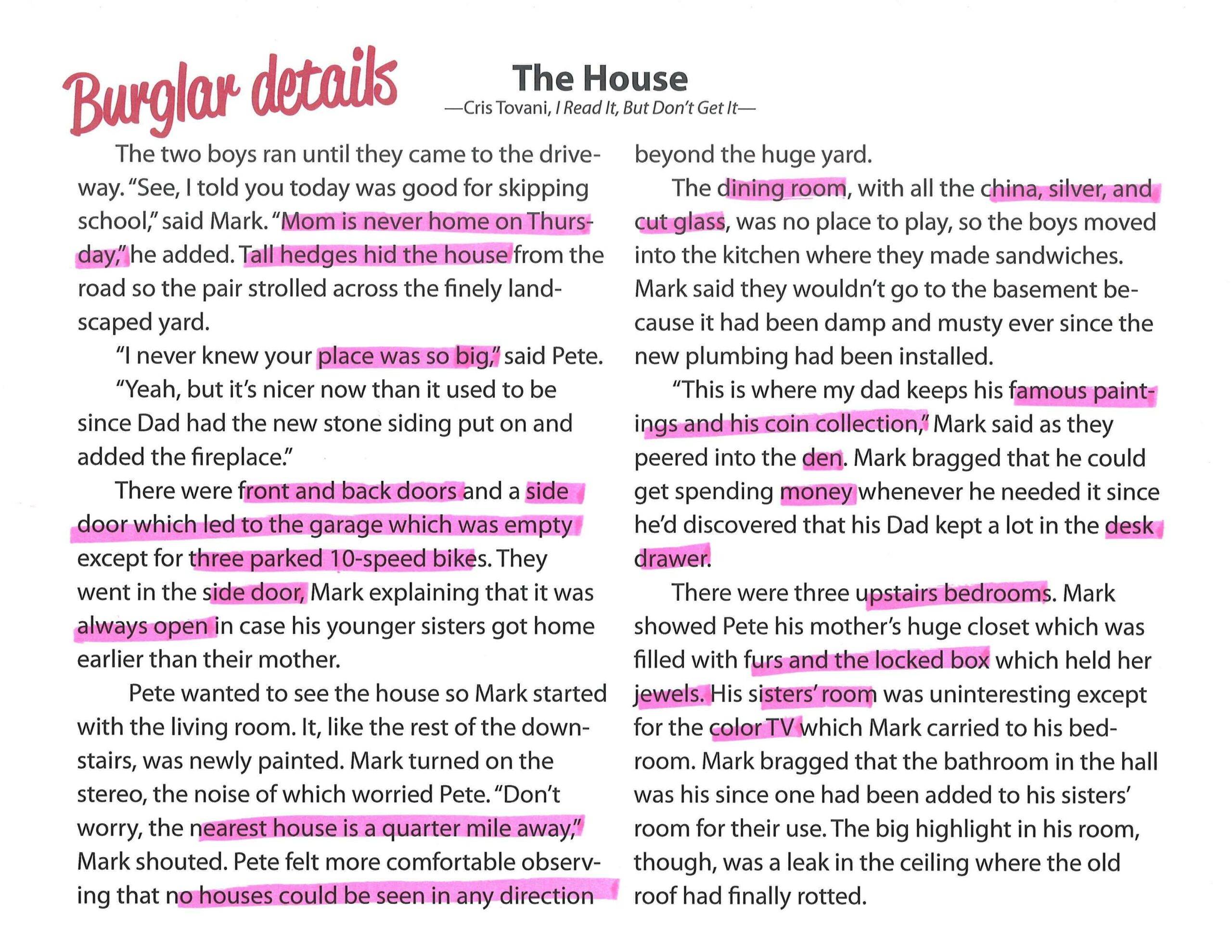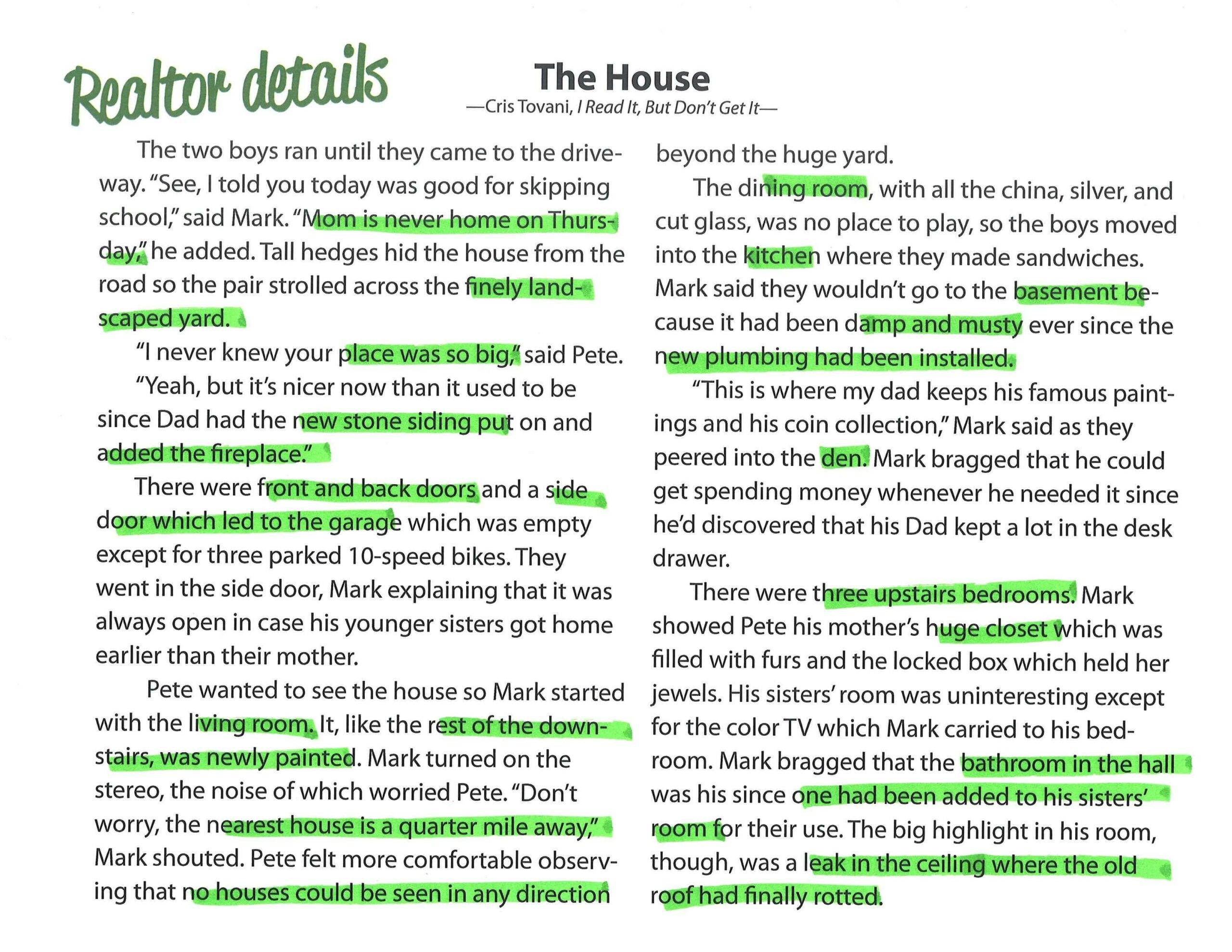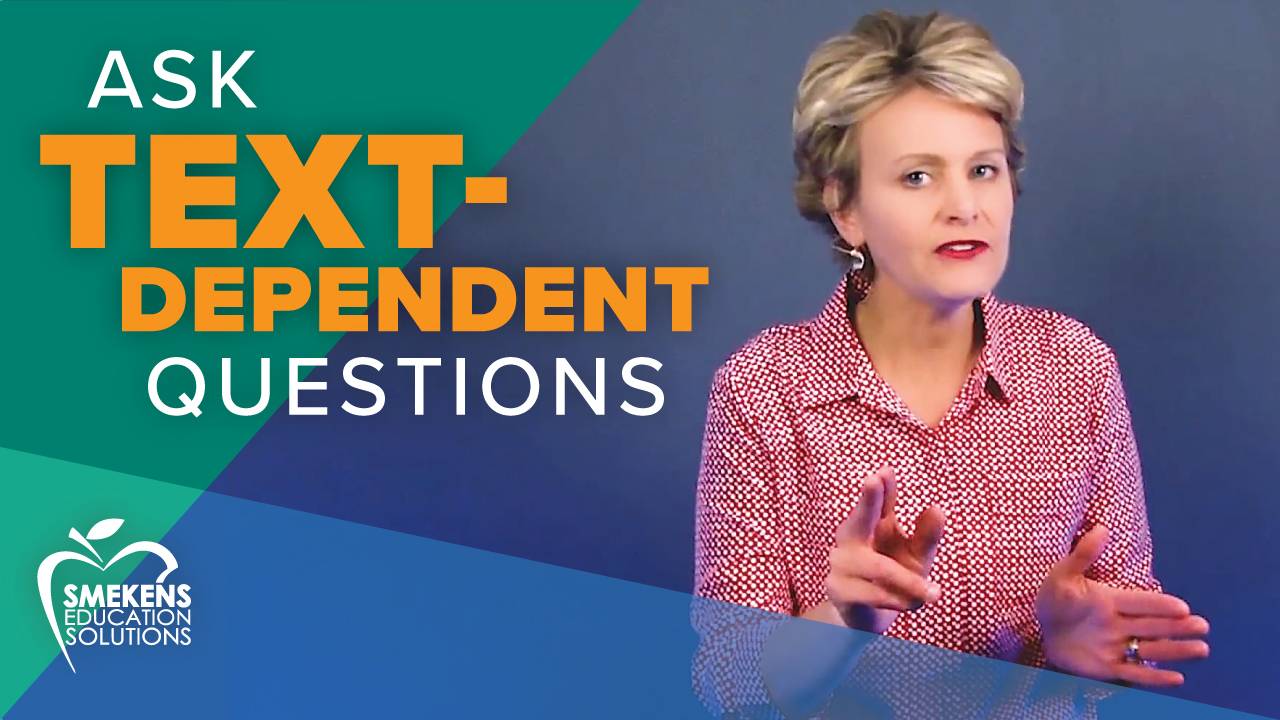Learning Center
Reading
Annotate based on the reading purpose
February 25, 2019
The solution to transforming “painters” to selective highlighters is to define what is considered important information–and this is determined by the reading purpose.
Explain to students that there is a direct connection between questions and annotations. Each text-dependent question sends readers back into the text with a new mission, a new reading purpose. They are looking for relevant details that may help in answering that particular question. Those words and phrases are the ones they should highlight/annotate.
To demonstrate, reveal “The House” passage, found within Chris Tovani’s book I Read It, But Don’t Get It.
Without a reading purpose, nothing in this passage seems particularly noteworthy. However, if students were to mark the information a burglar would want to know, then their definition of “important details” just became clear. They would mark details like unlocked door, tall hedges, and loose cash.
Since text-dependent questions drive the important details student annotate, then each question will send students back into the same text but with a new purpose. For example, if students were to mark this same passage for the relevant information a realtor would want to know, then textual evidence would likely include the newly painted rooms, old rotted roof, and basement plumbing situation.
When teaching annotation, go beyond arming students with highlighters and assuming they will know what to mark. Rather, define what is considered “important information” by providing a specific reading purpose (i.e., the text-dependent question). This will then drive which textual details they highlight–the ones relevant in answering the question.





